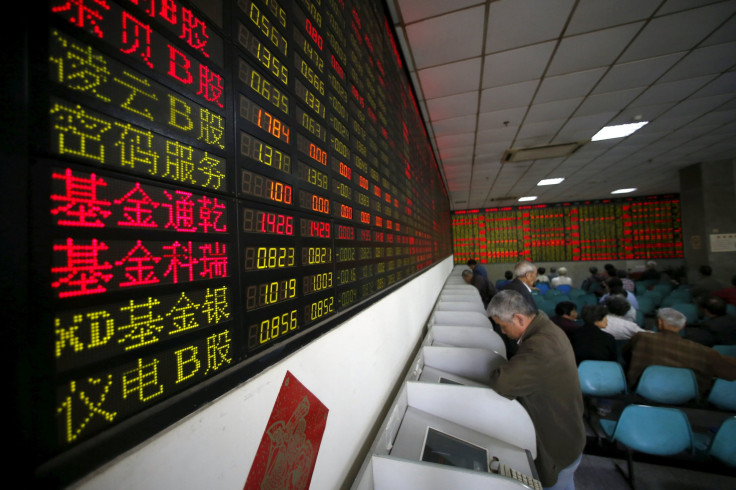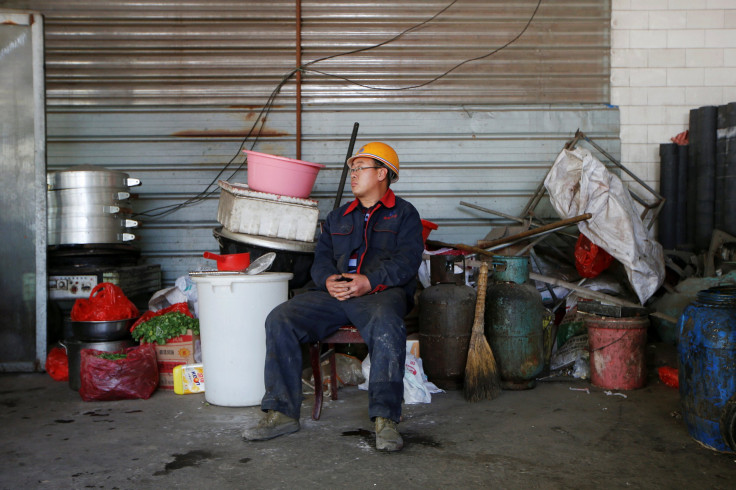China's People's Daily Seeks To Reassure Investors That Beijing Will Rein In Debt-Fueled Growth, Control Leverage Levels

SHANGHAI — China’s official People’s Daily newspaper has sought to calm worries that the country will blindly push ahead with debt-fueled growth at the expense of economic reform. It predicts slower growth with what it called an “L-shaped trajectory” in the next one to two years, and says the country will “not opt for increased borrowing” as this could lead to a financial crisis and recession.
In the 11,000-word article, an unnamed “authoritative person” – a phrase sometimes used by the Communist Party mouthpiece to denote the official line on key economic issues – suggested that with China’s growth falling to its lowest level in a quarter-century, 6.9 percent, last year, and 6.7 percent annualized in the first quarter of 2016, no rapid V-shaped or U-shaped rebound should be expected.
The piece also suggested that the government was aware of the risks of excessive credit-fueled debt, saying “a high leverage ratio will inevitably lead to high risks,” and “if handled inappropriately ... will trigger a systemic financial crisis or even economic contraction to wipe out people’s savings.”
The official source also said it was “impossible and unnecessary to drive economic growth by increasing the leverage level,” adding “the most dangerous thing is the unrealistic hope" of achieving both short-term high growth and long-term sustainability.
Despite the recent slowdown, the Chinese government has said it intends to maintain growth of 6.5 to 7 percent annually for the next five years, which some observers has said is over-optimistic and will require excessive stimulus to achieve.
But some analysts said the People's Daily article could reflect a change of policy, and the government might now slow stimulus and push harder for further structural reforms.

It remains to be seen whether any real change happens, but the article's publication follows expressions of concern from a number of quarters — including the Economist last week — that China is repeating the policy of unrestrained deficit spending and stimulus that followed the 2008-09 financial crisis, which is widely seen as having created overcapacity in a range of industries and undermined reforms.
Beijing said in March it would increase its budget deficit from 2.3 percent to 3 percent of GDP this year, while fixed-asset investment rose by 10.7 percent year-on-year in March. And though officials have said previously they will take care that spending goes to productive areas of the economy, credit at banks reached a record high in the first quarter, and bad loans have risen sharply in the past year. A relaxation of credit for property purchases has also led to fears of overheating in some parts of the country, while China’s railways announced last week that their debts now totaled $640 billion, and rose by $1.4 billion in the first quarter.
The People's Daily article called for controls of risks in the stock market, currency markets, banking and property sectors, adding: "We should completely abandon the illusion of reducing leverage by loosening monetary conditions to help accelerate economic growth."
This echoed the Economist’s argument. “Rather than deploying both fiscal and monetary stimulus to keep growth above the official target of at least 6.5 percent this year (which is, in any event, unnecessarily fast), the government should save its firepower for a real calamity,” the British magazine said, and should “tolerate more defaults” on loans, adding, “The longer China delays a reckoning with its problems, the more severe the eventual consequences will be.”
Whether the latest comments will reassure economists that China can balance growth with reform is not certain. Following the publication of the People’s Daily article, the Economist’s China economics correspondent, Simon Rabinovitch, tweeted: “As for People's Daily forecast of L-shaped growth for China, it's been ongoing for 5 years already and it's a lazy L.”
Senior officials, including China’s central bank governor, have repeatedly sought to reassure markets in recent months that since China’s savings ratio is high, the country can tolerate a higher level of deficit. And a commentary in the official Global Times newspaper Monday sought to allay fears about credit risks.
It acknowledged that “many firms are seeing their profits dwindling and some are suffering growing losses, further adding to their difficulties in paying back debts.” And it said more defaults were to be expected. But it suggested that such risks were “quite normal” – arguing that the United States has a bond default rate of between 1 and 3 percent a year, which “soared to more than 8 percent in the two years after 2008 when the global financial crisis erupted.”
The Global Times did acknowledge, however, that China needed better laws to regulate corporate bonds and prevent bond-related fraud, which has undermined investor confidence.

China has pledged to take steps to normalize defaults, and has begun to allow a small number of companies, including at least one steel mill, to default on loans rather than bailing them out this year.
However, the Global Times English edition also published an article by Shen Jianguang, chief economist of Mizuho Securities Asia, who said it remained to be seen whether the government could deliver on its promised reforms, noting a recent emphasis on debt-for-equity swaps, which some see as a way of staving off bankruptcies:
“There has been a tendency to keep firms open rather than allowing them to close down in order to maintain employment as the country tackles industrial overcapacity,” Shen wrote.
And he said recent government actions suggest “stabilizing growth and keeping employment stable remain top priorities,” adding that this was likely to continue at least until the Communist Party’s five-year congress late next year.
And another leading Chinese economist, Ning Zhu of Shanghai Jiaotong University's Institute for Advanced Finance, recently published a book, "China's Guaranteed Bubble," warning that the government's tendency to bail out failing sectors was propelling the economy toward systemic risk.
Yet the government still faces calls for greater spending. After China’s export growth fell back into negative territory, at least in dollar terms, last month, after rising sharply in March, HSBC economists Jing Li and Julia Wang wrote in a report sent to International Business Times on Monday, “In view of the uncertainties elsewhere, continued fiscal easing to support infrastructure investment is critical to sustaining the growth recovery in the coming months.”
© Copyright IBTimes 2025. All rights reserved.






















